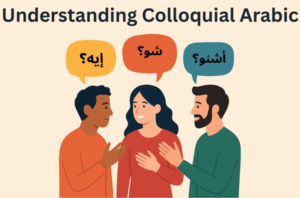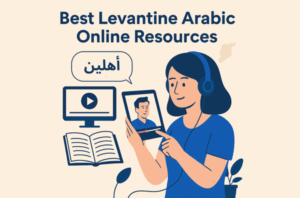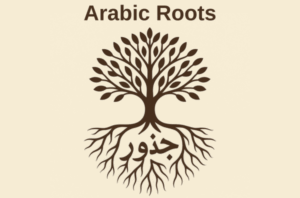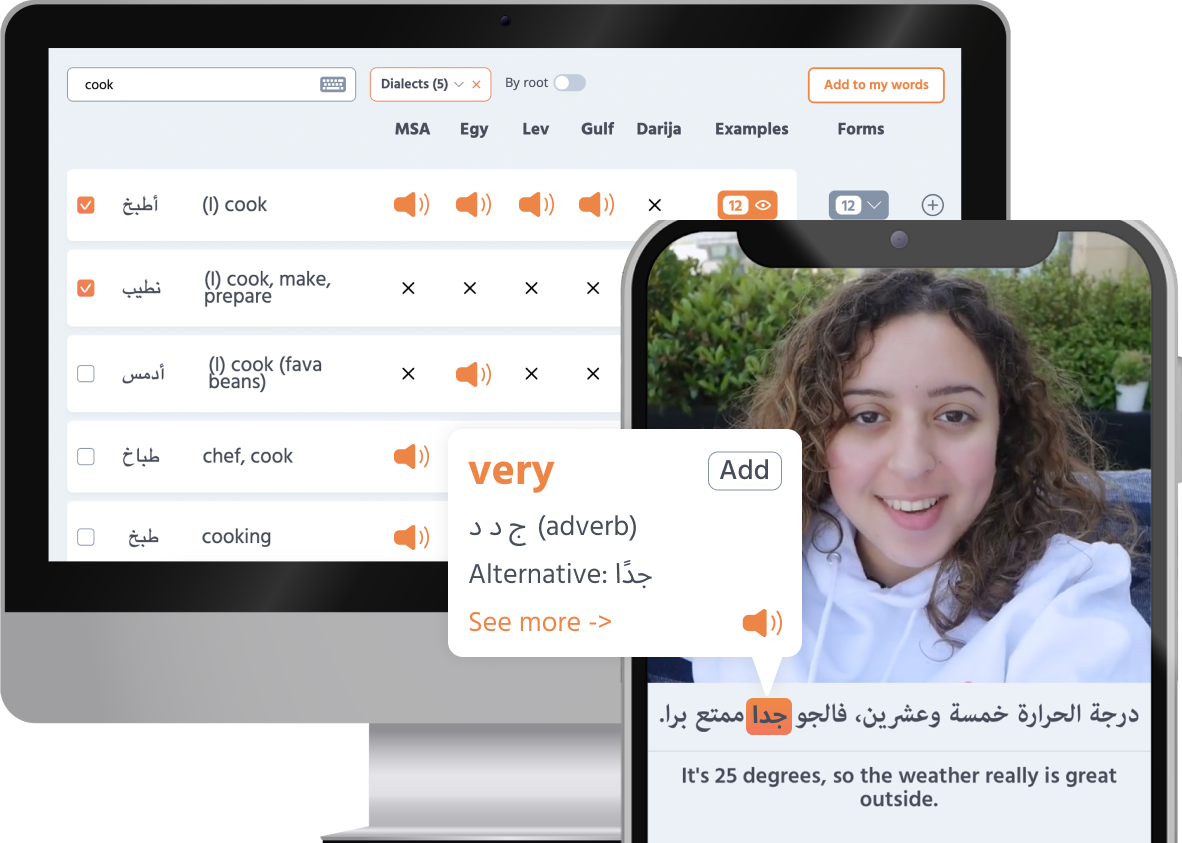When people talk about the Arabic language, they often imagine a single, unified tongue spoken from Morocco to Iraq. But anyone who’s actually tried to travel or communicate across different Arabic-speaking countries quickly learns: it’s not that simple. While Modern Standard Arabic (MSA) ties the Arab world together in writing and formal contexts, spoken Arabic is made up of dozens of regional dialects —some of which sound so different, they might as well be separate languages.
This raises the key question: are Arabic dialects mutually intelligible ?
So, how much do Arabic speakers actually understand each other when they speak in their native dialects? That’s where mutual intelligibility comes in.
What are Arabic dialects? Arabic dialects (called عامية
or دارجة
, depending on the region) are the everyday, spoken varieties of Arabic that differ widely across the Arab world. These dialects evolved organically over centuries, absorbing influences from Classical Arabic, local languages, colonial powers, and neighboring cultures.
Some major dialect groups include:
Egyptian Arabic Sa’idi sub-dialect )Levantine Arabic Syrian , Lebanese , Palestinian , and Jordanian varieties)Gulf Arabic Maghrebi Arabic (Darija)
But if you really want to get deeply in the weeds and technical about subdialects within these major groupings, check this chart:
Rafy , CC BY 3.0 , via Wikimedia CommonsEven within these groups, sub-dialects can vary from city to city and even neighborhood to neighborhood.
What is mutual intelligibility? Mutual intelligibility is a linguistic term that refers to how well speakers of two different language varieties can understand each other without prior study . For example, a Spaniard and a Portuguese speaker might pick up parts of each other’s speech due to similarities. In Arabic, mutual intelligibility depends on several overlapping factors.
In this article, we explore whether Arabic dialects are mutually intelligible , and what factors increase or reduce that intelligibility across regions.
Factors affecting mutual intelligibility in Arabic 1. Geographic proximity As with most languages, the closer two dialects are geographically, the more likely they are to be mutually intelligible . A Lebanese and a Palestinian will understand each other more easily than a Lebanese and a Moroccan.
2. Media exposure Egyptian Arabic is one of the most widely understood dialects in the Arab world, not because it’s similar to others, but because of Egypt’s dominance in cinema, television, and music for much of the 20th century. Many Arabs grew up watching Egyptian content, making the dialect familiar even to those who don’t speak it natively.
3. Shared vocabulary vs borrowed words Some dialects have a heavy influence from other languages. Maghrebi dialects, for example, borrow many French, Berber, and even Spanish words, which can be alien to someone from the Gulf region. Gulf Arabic, on the other hand, may include Persian or English terms.
4. Pronunciation and phonetics Even when two dialects share vocabulary, differences in pronunciation can create barriers . For example, the Egyptian ج
is pronounced like the English “g” in game , while in Levantine Arabic, ج
sounds more like the French “j”.
5. Grammar and syntax Though all dialects descend from Classical Arabic, some retain more of the original grammar than others . For instance, Moroccan Arabic tends to drop short vowels and even simplify verb conjugations, making it more difficult for others to follow.
Dialect pairs and their mutual intelligibility To better understand how mutually intelligible Arabic dialects really are , let’s break it down by comparing major dialect pairs.
Egyptian ↔ Levantine How well do Egyptians and Levantines understand each other?
Very well, in most cases. This is one of the most mutually intelligible dialect pairs in the Arab world.
From Levantine to Egyptian:
Levantine dialects (spoken in Lebanon, Syria, Jordan, and Palestine) share a lot of core vocabulary and grammar with Egyptian Arabic.
Intonation and rhythm are different, but not enough to cause serious confusion.Thanks to shared religious and cultural expressions and historical connections, Egyptians can usually follow Levantine speech without much effort .
Exposure to Levantine songs and TV (especially in recent years) has only increased comprehension.
From Egyptian to Levantine:
Egyptian Arabic has been the dominant dialect in Arabic media (films, comedy, soap operas, music) for over half a century.
Most Levantines grow up hearing Egyptian content and are extremely familiar with its vocabulary, expressions, and even humor.
As a result, Levantines typically understand Egyptian Arabic very well , often without realizing it’s a separate dialect.
The verdict?
There might be the occasional confusion over idioms or slang, but nothing major.
High mutual intelligibility in both directions.Conversations flow easily between Egyptians and Levantines, often without anyone switching to MSA or “neutral” Arabic اللهجة البيضاء
.
Egyptian ↔ Gulf How well do Egyptians and Gulf Arabs understand each other?
The short answer is: there’s some mutual intelligibility , but it depends heavily on exposure , age , education , and context .
From Gulf to Egyptian:
Gulf Arabic (spoken in Saudi Arabia, Kuwait, UAE, Bahrain, etc.) shares quite a bit of vocabulary with Egyptian Arabic, especially in religious or formal settings where MSA influence is stronger.But everyday Gulf speech includes a lot of Persian, English, and even Hindi/Urdu loanwords (due to proximity to South Asia and colonial influence).Pronunciation is also different. For instance, some Gulf speakers pronounce the ج as (y) (e.g., ريال
instead of رجالة
for “men”), which can throw off Egyptians.
Egyptians, especially older generations, may find Gulf dialects challenging at first , especially if they haven’t been exposed to Gulf content.
From Egyptian to Gulf:
Thanks to Egypt’s dominance in media, film, music, and education throughout the 20th century, many Gulf Arabs grew up watching Egyptian movies and TV shows.
As a result, most Gulf Arabs—especially older ones—have high passive comprehension of Egyptian Arabic .
Younger generations in the Gulf are more exposed to English and local Gulf dialects, so the passive understanding of Egyptian may be a little weaker now than before—but it’s still quite good.
The verdict?
Mutual intelligibility is moderate , and with a little effort and context, communication is usually possible—but not as smooth as, say, Egyptian ↔ Levantine.Gulf Arabs usually understand Egyptian Arabic better than Egyptians understand Gulf Arabic. If a conversation begins in a dialect and becomes difficult, many people will instinctively code-switch toward a simplified version of Arabic or even dip into MSA or English.
Levantine ↔ Gulf How well do Levantines and Gulf Arabs understand each other?
Moderately well , with more effort required compared to the Egyptian-Levantine connection.
From Gulf to Levantine:
Gulf dialects can sound more formal or old-fashioned to Levantine ears due to their closer phonological resemblance to Classical Arabic .
Gulf Arabic uses some unique vocabulary and less frequent exposure to Levantine audiences (compared to Egyptian media).
Levantines may find some Gulf accents challenging—especially the deeper Saudi or Bedouin-style dialects.
From Levantine to Gulf:
Many Gulf Arabs are exposed to Levantine Arabic through TV dramas, influencers, and cultural exchange .
Younger Gulf speakers are generally familiar with Lebanese and Syrian dialects, especially from modern pop culture and media.
However, the Gulf audience still might find Palestinian or Jordanian dialects more difficult than Lebanese or Syrian, depending on their exposure.
The verdict?
Cultural familiarity and media exposure are the biggest factors.Moderate mutual intelligibility , better among urban, media-savvy populations.Levantine ↔ Gulf conversations often involve occasional code-switching to MSA or simplified phrases to ensure clarity.
Darija (Maghrebi Arabic) ↔ Other Arabic dialects
Among the biggest challenges for learners and even native speakers is understanding whether Arabic dialects are mutually intelligible when it comes to Darija.
How well is Darija understood across the Arab world?
Not very well, unfortunately —Darija (Moroccan, Algerian, and Tunisian Arabic) is often considered the least mutually intelligible group of Arabic dialects.
From Darija to the rest of the Arab world:
Maghrebi dialects are heavily influenced by French, Berber, Spanish, and colonial languages , leading to major differences in vocabulary.
Many short vowels are dropped, verbs are conjugated differently, and the speed of speech can make comprehension difficult even if the words are familiar.
Speakers from Egypt, the Levant, or the Gulf often struggle significantly to understand natural, unsimplified Darija speech.
From the rest of the Arab world to Darija:
North Africans typically grow up with high exposure to Egyptian and Levantine content , particularly Egyptian movies and Syrian dramas.
Many Moroccans, Algerians, and Tunisians can understand Eastern dialects far better than they are understood in return .
Some even grow up using a simplified hybrid when speaking to non-Maghrebi Arabs.
The verdict?
Darija is sometimes jokingly referred to as “Arabic with a French accent on 2x speed”—which says a lot about how it sounds to others.Very low mutual intelligibility , especially if the Darija speaker uses a fast, local register.switch to MSA or another dialect when speaking to Arabs from the East.
The role of اللهجة البيضاء
(the “white” dialect) In real-life conversations across dialects, many Arabic speakers unconsciously switch code to a simplified, hybrid form of Arabic, often referred to as اللهجة البيضاء
—literally (the white dialect.) It’s not an official term, but it’s widely understood among native speakers.
This white Arabic draws vocabulary and sentence structure from Modern Standard Arabic (MSA) but softens the formal tone and mixes in more familiar, regionally neutral elements. It’s:
Easier to understand across regionsLess formal than MSA but more neutral than local dialectsCommon in TV interviews, pan-Arab YouTube content, news reporting , and cross-cultural conversations
اللهجة البيضاء
serves as a bridge when mutual intelligibility becomes tricky. It’s especially useful in:
Inter-Arab business meetings
International events and conferences
Online communication between Arabs from different countries
Language-learning environments for non-native speakers
It’s a practical tool, not a fixed dialect, and its flexibility is part of what keeps the Arab world linguistically connected. In this way, it’s similar to Educated Spoken Arabic (ESA).
In this clip, a Gulf speaker explains how different Arabic dialects emerged . He speaks in an elevated colloquial style that blends elements of Modern Standard Arabic (MSA). Real-world implications 1. Media and entertainment Producers often choose Egyptian or Levantine Arabic for pan-Arab content because these are more widely understood.
2. Travel and tourism Mutual intelligibility affects everything from business trips to backpacking adventures. A Syrian tourist in Tunisia may find themselves mixing in some MSA, ESA, or even English to be understood.
3. Social media and communication Online, young Arabs often default to Egyptian, Levantine, or neutral-sounding words when engaging with wider audiences. In private groups, they stick to their own dialects, reflecting both linguistic pride and the comfort of familiarity.
Here are an example of somewhat neutral-sounding spoken Arabic meant to be accessible.
Ibn Hatuta (ابن حتوتة), a popular Jordanian travel vlogger, explains why he turned travel into his career —speaking in a clear, pan‑Arab “white” dialect that’s widely understood across the Arab world. 4. Language learning Arabic learners often choose Egyptian or Levantine dialects first due to their wide exposure and general comprehensibility. Teachers often recommend these dialects as a “gateway” to the rest of the Arabic-speaking world.
Oh, and by the way… If learning Arabic at your own pace, with fun, real-world videos sounds like your style, then Playaling could be exactly what you’re looking for!
With Playaling, you’ll dive into any major Arabic dialect or MSA. Our diverse range of videos has it all—from everyday conversations and cultural moments to music videos, TV and movie clips, influencer content, news broadcasts, and inspiring talks.
Our interactive captions let you tap any word for instant translations, context, and audio. So, real Arabic content becomes accessible with just a click. Miss something? No problem—rewind and listen as often as you need, or hover over subtitles for quick definitions.
Spot a word you want to learn? Save it to your personalized word set, or dive into curated sets for focused practice and easy review.
Interactive exercises let you dive in and practice what you’ve learned.
Need to look something up? The Audio Dictionary has you covered with clear human pronunciations and real world examples.
It’s a learning experience that keeps you engaged, bringing authentic, real-world Arabic closer to you every step of the way.
Give it a try!









